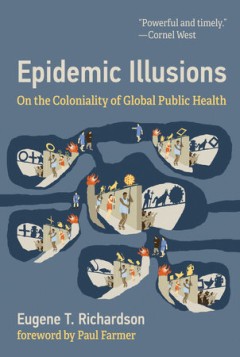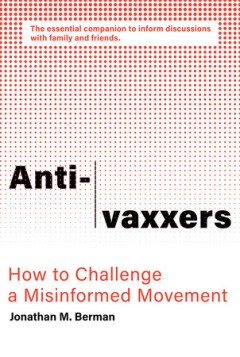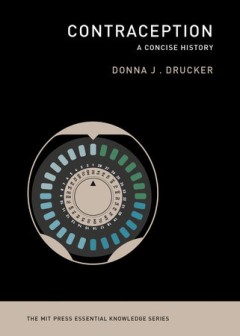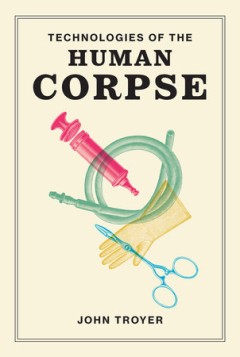Filter by

Viruses, Pandemics, and Immunity
How viruses emerge to cause pandemics, how our immune system combats them, and how diagnostic tests, vaccines, and antiviral therapies work. Throughout history, humans have contended with pandemics. History is replete with references to plagues, pestilence, and contagion, but the devastation wrought by pandemics had been largely forgotten by the twenty-first century. Now, the enormous human …
- Edition
- -
- ISBN/ISSN
- 9780262363464
- Collation
- -
- Series Title
- -
- Call Number
- -

How Molecular Forces and Rotating Planets Create Life: The Emergence and Evol…
A reconceptualization of origins research that exploits a modern understanding of non-covalent molecular forces that stabilize living prokaryotic cells. Scientific research into the origins of life remains exploratory and speculative. Science has no definitive answer to the biggest questions—“What is life?” and “How did life begin on earth?” In this book, Jan Spitzer reconceptualiz…
- Edition
- -
- ISBN/ISSN
- 9780262363044
- Collation
- -
- Series Title
- -
- Call Number
- -

Epidemic Illusions: On the Coloniality of Global Public Health
A physician-anthropologist explores how public health practices—from epidemiological modeling to outbreak containment—help perpetuate global inequities. In Epidemic Illusions, Eugene Richardson, a physician and an anthropologist, contends that public health practices—from epidemiological modeling and outbreak containment to Big Data and causal inference—play an essential role in perp…
- Edition
- -
- ISBN/ISSN
- 9780262365185
- Collation
- -
- Series Title
- -
- Call Number
- -

Salt Wars: The Battle Over the Biggest Killer in the American Diet
How food industry lobbyists and a small group of scientists have successfully fought government efforts to reduce dangerous levels of sodium in our food. A high-sodium diet is deadly; studies have linked it to high blood pressure, strokes, and heart attacks. It's been estimated that excess sodium in the American diet causes as many as 100,000 deaths and many billions of dollars in avoidable …
- Edition
- -
- ISBN/ISSN
- 9780262360555
- Collation
- -
- Series Title
- -
- Call Number
- -

Anti-vaxxers: How to Challenge a Misinformed Movement
From science advocate and March on Science National Co-Chair Jonathan M. Berman, an essential takedown of the anti-vaccination movement, from its nineteenth-century antecedents to today's Facebook activists, offering strategies for refuting false claims of friends and family. Vaccines are a documented success story, one of the most successful public health interventions in history. Yet there…
- Edition
- -
- ISBN/ISSN
- 9780262359566
- Collation
- -
- Series Title
- -
- Call Number
- -

Youth Mental Health: A Paradigm for Prevention and Early Intervention
Experts discuss the potential of early intervention to transform outcomes for people with mental disorders. Mental illness represents one of the largest disease burdens worldwide, yet treatments have been largely ineffective in improving the quality of life for millions of affected individuals—in part because approaches taken have focused on late-stage disorders in adulthood. This volume s…
- Edition
- -
- ISBN/ISSN
- 9780262044547
- Collation
- -
- Series Title
- -
- Call Number
- -

The Matter of Facts: Skepticism, Persuasion, and Evidence in Science
How biases, the desire for a good narrative, reliance on citation metrics, and other problems undermine confidence in modern science. Modern science is built on experimental evidence, yet scientists are often very selective in deciding what evidence to use and tend to disagree about how to interpret it. In The Matter of Facts, Gareth and Rhodri Leng explore how scientists produce and use evi…
- Edition
- -
- ISBN/ISSN
- 9780262358279
- Collation
- -
- Series Title
- -
- Call Number
- -

Contraception: A Concise History
The development, manufacturing, and use of contraceptive methods from the late nineteenth century to the present, viewed from the perspective of reproductive justice. The beginning of the modern contraceptive era began in 1882, when Dr. Aletta Jacobs opened the first birth control clinic in Amsterdam. The founding of this facility, and the clinical provision of contraception that it enabled,…
- Edition
- -
- ISBN/ISSN
- 9780262357579
- Collation
- -
- Series Title
- -
- Call Number
- -

Technologies of the Human Corpse
The relationship of the dead body with technology through history, from nineteenth-century embalming machines to the death-prevention technologies of today. Death and the dead body have never been more alive in the public imagination—not least because of current debates over modern medical technology that is deployed, it seems, expressly to keep human bodies from dying, blurring the bounda…
- Edition
- -
- ISBN/ISSN
- 9780262358095
- Collation
- -
- Series Title
- -
- Call Number
- -

Sulphuric Utopias: A History of Maritime Fumigation
How early twentieth century fumigation technologies transformed maritime quarantine practices and inspired utopian visions of disease-free global trade. In the late nineteenth and early twentieth centuries, fumigation technologies transformed global practices of maritime quarantine through chemical and engineering innovation. One of these technologies, the widely used Clayton machine, blasted …
- Edition
- -
- ISBN/ISSN
- 9780262358194
- Collation
- -
- Series Title
- -
- Call Number
- -
 Computer Science, Information & General Works
Computer Science, Information & General Works  Philosophy & Psychology
Philosophy & Psychology  Religion
Religion  Social Sciences
Social Sciences  Language
Language  Pure Science
Pure Science  Applied Sciences
Applied Sciences  Art & Recreation
Art & Recreation  Literature
Literature  History & Geography
History & Geography